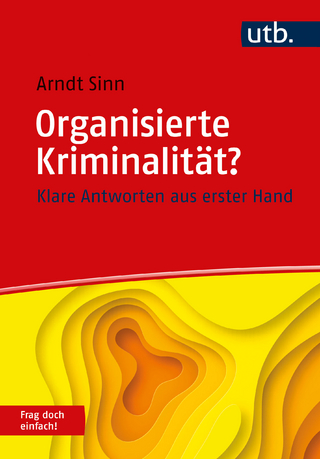
The Economics of Violence
How Behavioral Science Can Transform our View of Crime, Insurgency, and Terrorism
Seiten
2020
Cambridge University Press (Verlag)
978-1-107-09246-4 (ISBN)
Cambridge University Press (Verlag)
978-1-107-09246-4 (ISBN)
An accessible and provocative read for anyone interested in crime, insurgency, and terrorism, this book provides a simple way to understand the complexities of violence for students, researchers and national security professionals, and will enable current and future leaders to better reform the institutions that keep us safe.
How do we understand illicit violence? Can we prevent it? Building on behavioral science and economics, this book begins with the idea that humans are more predictable than we like to believe, and this ability to model human behavior applies equally well to leaders of violent and coercive organizations as it does to everyday people. Humans ultimately seek survival for themselves and their communities in a world of competition. While the dynamics of 'us vs. them' are divisive, they also help us to survive. Access to increasingly larger markets, facilitated through digital communications and social media, creates more transnational opportunities for deception, coercion, and violence. If the economist's perspective helps to explain violence, then it must also facilitate insights into promoting peace and security. If we can approach violence as behavioral scientists, then we can also better structure our institutions to create policies that make the world a more secure place, for us and for future generations.
How do we understand illicit violence? Can we prevent it? Building on behavioral science and economics, this book begins with the idea that humans are more predictable than we like to believe, and this ability to model human behavior applies equally well to leaders of violent and coercive organizations as it does to everyday people. Humans ultimately seek survival for themselves and their communities in a world of competition. While the dynamics of 'us vs. them' are divisive, they also help us to survive. Access to increasingly larger markets, facilitated through digital communications and social media, creates more transnational opportunities for deception, coercion, and violence. If the economist's perspective helps to explain violence, then it must also facilitate insights into promoting peace and security. If we can approach violence as behavioral scientists, then we can also better structure our institutions to create policies that make the world a more secure place, for us and for future generations.
Gary M. Shiffman, Ph.D., a veteran of the US Departments of Defense and Homeland Security and the Senate, teaches at Georgetown University, Washington DC, and explores the science of behavior, particularly the ways in which we can understand illicit behaviors. At Giant Oak, he creates software to make the world safer and more secure.
Introduction; 1. Violence; 2. The human condition; 3. Organized crime; 4. Insurgency; 5. Terrorism; 6. The rise of the Islamic State in al Qaeda's market; 7. Conclusions and prescriptions.
| Erscheint lt. Verlag | 31.1.2020 |
|---|---|
| Zusatzinfo | 1 Maps; 2 Line drawings, black and white |
| Verlagsort | Cambridge |
| Sprache | englisch |
| Maße | 156 x 235 mm |
| Gewicht | 510 g |
| Themenwelt | Recht / Steuern ► Strafrecht ► Kriminologie |
| Sozialwissenschaften ► Politik / Verwaltung ► Staat / Verwaltung | |
| Wirtschaft ► Volkswirtschaftslehre ► Mikroökonomie | |
| Wirtschaft ► Volkswirtschaftslehre ► Wirtschaftspolitik | |
| ISBN-10 | 1-107-09246-9 / 1107092469 |
| ISBN-13 | 978-1-107-09246-4 / 9781107092464 |
| Zustand | Neuware |
| Haben Sie eine Frage zum Produkt? |
Mehr entdecken
aus dem Bereich
aus dem Bereich
klare Antworten aus erster Hand
Buch | Softcover (2023)
UTB (Verlag)
CHF 27,85


